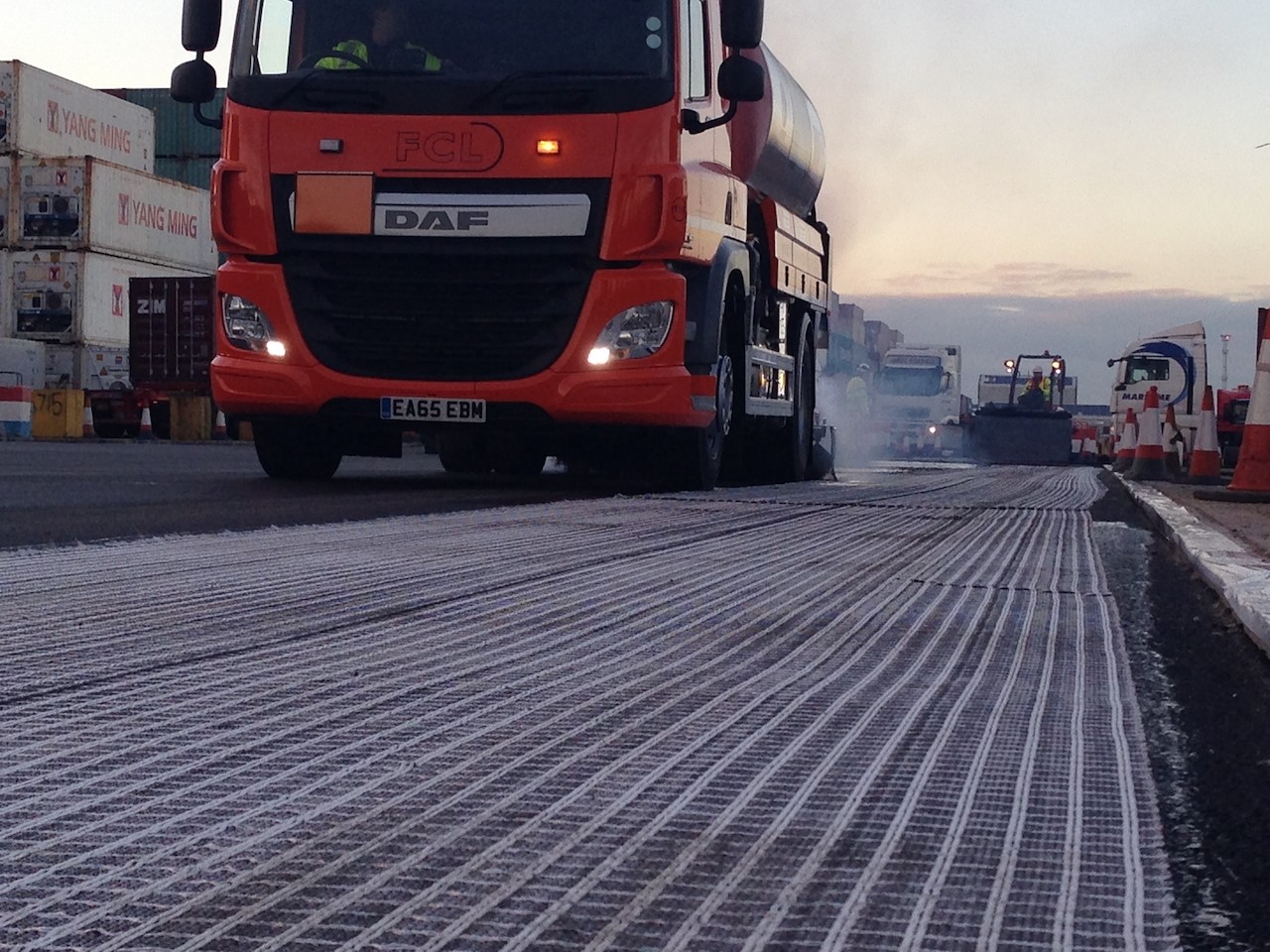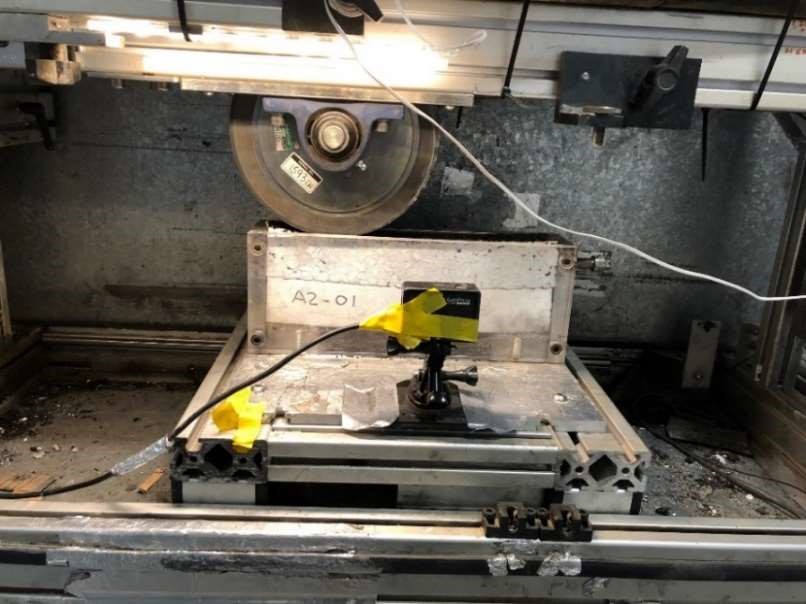Extending the life of asphalt pavements
by Michal Golos, on July 16, 2020
Standard bitumen tack coats delivered the best performance in recent geogrid-reinforced asphalt tests.
Results from testing, by Aecom’s Pavement Design and Asset Management team, showed using a 1.1l/m2 of tack coat with asphalt geogrid reinforcement was more effective than using a 2l/m2 spray rate. It was also more effective than a polymer-modified bitumen bond coat, which tests showed could, in fact, affect performance, as well as being more expensive.
Reflective surface cracking
Reflective surface cracking in asphalt pavements typically occurs over older asphalt layers, above joints or cracks in underlying concrete slabs (or cement bound base layers) and where there is inadequate bearing capacity.
Cracks are caused by horizontal stress from traffic, or from thermal expansion and contraction of the pavement structure; by vertical movement, including differential settlement between old and new lanes; or by a combination of the two.
Controlling reflective cracking
Asphalt reinforcement systems interact with the bitumen bound layer to add tensile stiffness, limiting strain and reducing crack development. They comprise a geogrid bonded to a fabric that act together to form a Stress Absorbing Membrane Interlayer (SAMI) and a moisture barrier. This extends service life of pavements and delivers cost savings during construction, and throughout their operation.

Stress Absorbing Membrane Interlayers limit and delay crack development in Asphalt pavements.
Tests confirm Tensar Glasstex SAMI performance with standard bitumen tack coats
Aecom was commissioned by road maintenance specialist and Tensar partner Foster Contracting to assess the effect and performance of Tensar’s Glasstex composite glass yarn grid and non-woven paving fabric on asphalt systems, incorporating either bond or tack coats.
Modified wheel track testing applied a load of 1.5kN on the samples, which comprised a 50mm thick stone mastic asphalt with Glasstex, overlaying a 50mm thick concrete base with a 3mm-4mm width notch to simulate a joint. Control samples, without Glasstex, were also tested. The number of passes it took to induce cracks in the asphalt were recorded, to give an assessment of performance.

Modified wheel track testing was used to apply loads to the samples.
The first phase of testing assessed Glasstex with a 1.1l/m2 160/220 paving grade bitumen tack coat and a 1.1l/m2 polymer-modified bitumen bond coats. The second phase assessed Glasstex using different amounts of the same tack and bond coats – 1.1l/m2 and 2l/m2, respectively.
Glasstex: proven performance improvements
Tests demonstrated that Glasstex improved resistance to reflective cracking, by slowing upward crack propagation from the concrete to the asphalt – samples incorporating Glasstex exhibited top-down cracking failures primarily. However, those samples without Glasstex showed bottom-up cracking; in other words, there was no protection against reflective cracking.
Polymer-modified bitumen vs straight bitumen tack coats
What this shows is that, while polymer-modified bitumen increases tensile bond strength of the interlayer, compared with a straight bitumen tack coat, increasing the amount of bond or tack coat in the test samples actually led to earlier failure in some cases.
So, while larger spray rates of 2l/m2 and the use of polymer-modified bitumen are sometimes recommended when installing asphalt reinforcement geogrids, these results demonstrate a 1.1l/m2 tack coat, as specified in BS EN 15381:2008 Geotextiles and geotextile-related products. Characteristics required for use in pavements and asphalt overlays, is the optimum spray rate to maximise performance.
Tensar asphalt reinforcement products
Our asphalt composite products interact with the bitumen bound layer to add tensile stiffness, limiting strain and reducing crack development. Our systems have been subject to extensive independent research and testing at many leading international institutions, including the UK’s University of Nottingham, with performance experience gained from several monitored installations in many countries.
To find out more, visit the Asphalt Reinforcement pages of our website.



.jpg?width=400&height=400&ext=.jpg)